
Sea urchins are a delight and immediately recall the taste of summer with their intense and unique aroma that tastes of the sea. A delicious fish product that, by pure chance, unites Italian and Japanese culture because it is part of both traditions of coastal cities. In Italy they are typical especially of Puglia, Sardinia and Sicily. However, not everyone knows that they have a very low calorie intake or that the creamy consistency is given by the particular organ that we remove: their gonads. Let's see together 5 fun curiosities about sea urchins.
1. Why is Sea Urchin Meat Orange?
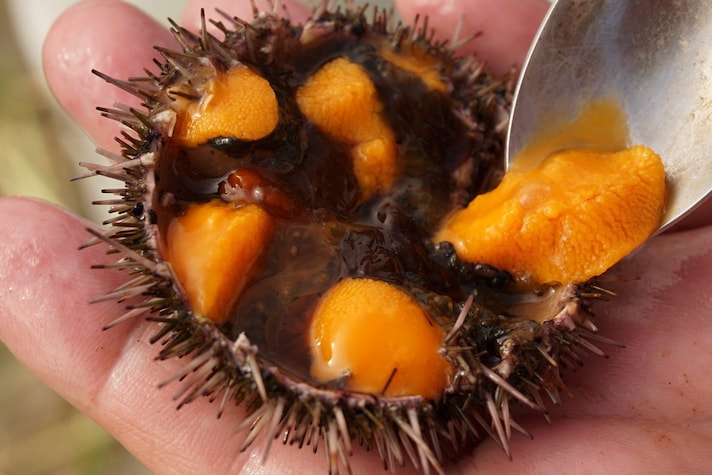
The deep orange color of sea urchin meat is mainly due to the presence of carotenoids, a group of organic pigments that give bright colors to many organisms, from plants to seafood. Carotenoids play a fundamental role in protecting cells from damage caused by free radicals, acting as powerful antioxidants. They also contribute to the photosynthesis of some unicellular algae that sea urchins feed on, thus indirectly influencing the color of their meat. These organic pigments absorb blue and violet light, while reflecting red and yellow light. This property gives sea urchin meat its characteristic orange hue.
But be careful: not all sea urchins are the same and the color can vary slightly depending on the species of sea urchin, its diet and the environment in which it lives.
2. Why Do We Only Eat Female Sea Urchins?
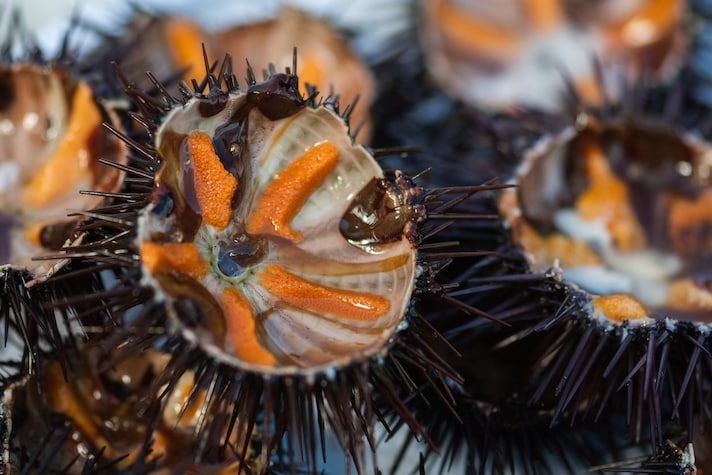
This is a very widespread belief, but in reality it is not true. The belief that only female sea urchins are eaten arises from superficial observation and confusion between species. In the Mediterranean, the two most common species of sea urchins are Paracentrotus lividus and Arbacia lixula. The first, with generally purple spines, is commonly called the "female sea urchin" because of its larger and more visible gonads. The second, with black spines, is instead called the "male sea urchin". In reality they are two different species, as if we were talking about a Labrador and a poodle in the world of dogs. The former arrive at the table because they have larger gonads and this has led to the mistaken belief that only the former are edible, associating them with females.
In fact, both "male" and "female" sea urchins are edible. The difference in flavor is minimal and depends more on the size of the gonads than on the sex of the animal.
3. Is It True That Only the Gonads of Sea Urchins are Eaten?
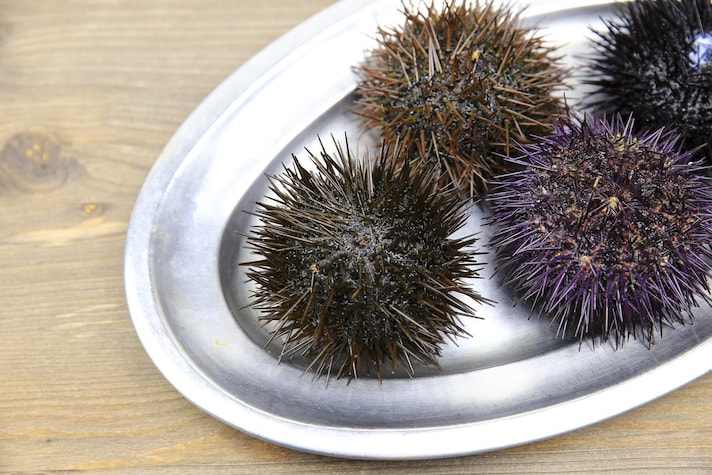
Of sea urchins, only the gonads (the organs responsible for producing sperm and egg cells, the equivalent of testes and ovaries in humans) are eaten, which are commonly (and incorrectly) called "eggs" or "coral." These are the only edible parts of the sea urchin and are prized for their delicate, marine flavor. The gonads are found in both sexes and, depending on the species, can vary in color from yellow-orange to dark red. The rest of the sea urchin's body is not edible.
4. Sea Urchins Are Low in Calories
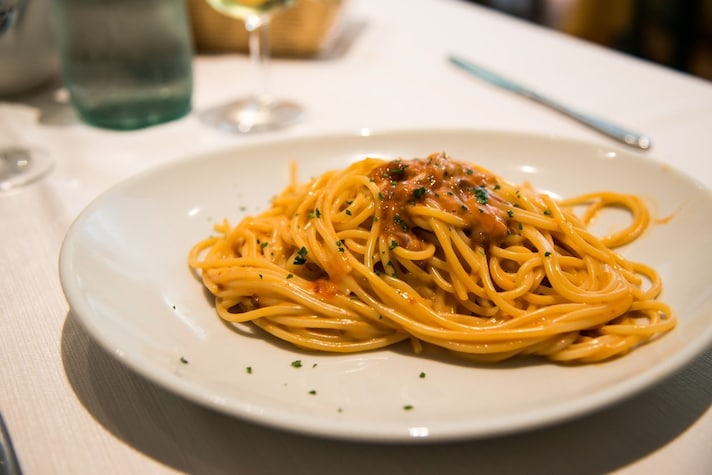
Despite their intense flavor and rich texture, they provide relatively few calories. On average, 100 grams (contained in about 10 urchins) of sea urchin meat is estimated to contain about 100-110 calories. Most of the gonads are also made up of water so they are also low in fat, making them an excellent choice for those following a low-calorie diet.
5. Sea Urchins Are Significantly Fluctuating in U.S.
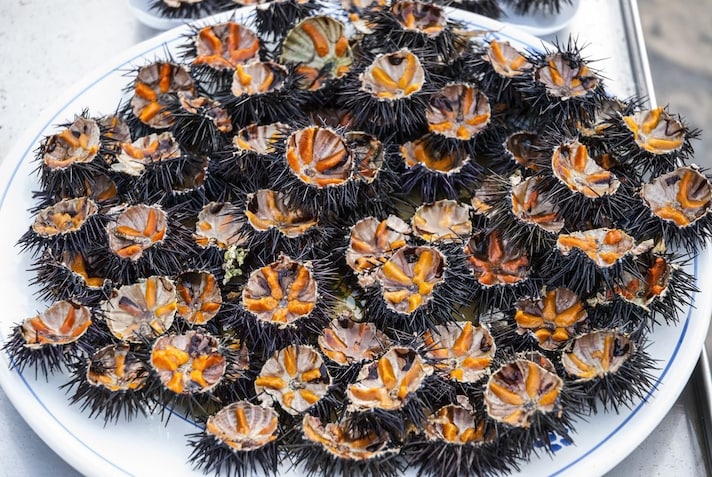
Sea urchins are not disappearing from U.S. waters, but their populations are fluctuating dramatically, leading to significant ecological challenges. On the West Coast, especially in California and Oregon, purple sea urchins (Strongylocentrotus purpuratus) have experienced explosive growth due to the decline of their predators, such as sea otters and sunflower sea stars, which have been affected by disease and environmental stresses. This surge has resulted in overgrazing of kelp forests, transforming them into "urchin barrens" and threatening marine biodiversity.
In contrast, the Caribbean and Florida's east coast have seen catastrophic die-offs of long-spined sea urchins (Diadema antillarum) due to a ciliate parasite, leading to the loss of up to 99% of the population and jeopardizing coral reef health. Restoration efforts include urchin removal and the cultivation of lab-grown kelp to help restore ecosystems. While sea urchin populations are not disappearing, the fluctuations present ecological challenges, and ongoing research and restoration are vital for preserving marine environments.
;Resize,width=767;)
